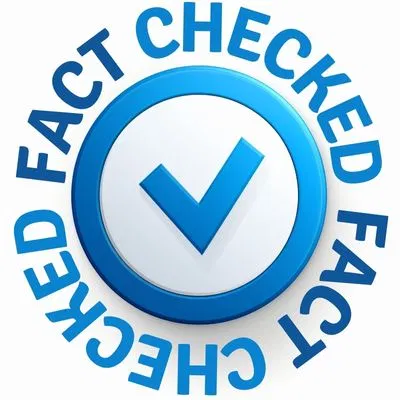7 Branding Strategy Types for Successful Business Growth

Published September 23, 2023
It is reported that an estimated 80% of businesses fail within the first 18 months. You may think that competition, inconsistency, or bankruptcy might back it. But, it is not true. The lack of branding strategy is the most common reason behind failed business ventures.
A successful branding strategy supports businesses in many ways. It creates a unique identity for them in the market. It separates them apart and increases their positioning among their competitors. It is also the secret to improving and sustaining profits.
There are varying types of brand strategies. Knowing which suits your enterprise can be challenging if you’re clueless about them. Worry no more, as this article will tackle all of them. Continue reading to learn the world of branding strategies. Its meaning, types, essence, and the importance of having a solid brand. Let’s begin.
What Is Branding?
Branding is more than the process of making an enterprise name, symbol, or design. Branding is how businesses vary themselves from their competitors. It is how they build customer loyalty. A branding strategy helps you build your reputation in your market.
As we know, several factors come into play when customers ultimately buy a product. Brand familiarity and identity are crucial factors. Statistics show that 59% of shoppers buy new products because a brand is familiar. Thus, it allows you to stand out in your industry. It also helps you foster long-term connections with your customers.
Today’s businesses need to create an emotional relationship with their target market. Branding is the secret to achieving it. It helps companies to bond with their target audience on a deeper level. In turn, they foster customer loyalty and customer lifetime value.
Benefits of Having a Branding Strategy: The Importance of Having a Strong Brand
1. Sets a business apart from its competitors
It is no secret that any industry has a competitive marketplace. Businesses need to find ways to stand out against their competitors. Branding aids in giving a unique business identity. It helps in the flourishing market positioning of a business in the market. As a result, a company can make itself more recognizable and impressive to customers.
2. Builds customer loyalty
Customers must have a positive emotional connection with a brand. It makes them more likely to continue buying. Branding can also help attract new customers. It is due to its help making a business more accessible and relatable.
3. Improves sales and profits
Branding can help businesses improve and sustain their sales and profits. A strong brand can set a premium price for its product offerings. It can also help enterprises to save money on promotion and marketing. Furthermore, branding makes reaching and connecting with the target market easier.
4. Influences purchasing decisions
Customers who are familiar with a brand have a high possibility to trust that company. They will also depend on its products more. This familiarity leads to an influence on purchasing decisions. It in turn, impact sales and profits.
7 Types of Branding Strategies
1. Personal Branding
Personal branding is creating a brand that portrays who you are and what you stand for. It is used for a person instead of branding for a whole business. This type of branding is often applied to demonstrate a person’s character. It also portrays personality or work as a brand.
Celebrities, politicians, thought leaders, and athletes are among the top users of this. It helps them present the best version of themselves to the public. For personal branding to be successful you should showcase a unique skill set and personality. The two will show that you are relatable to your audience.
An excellent branding example of this is Seth Godin. He is an entrepreneur and author of over 20 marketing books. He has positioned himself as a business and marketing expert. Seth has a recognizable personal brand. He is known for short blog posts, pinpointing one idea at a time.
2. Product Branding
Product branding entails creating a unique identity for a product. It is done in several ways. Still, the goal is to make the product stand out from the competition. It focuses on making the product distinct and recognizable.
There are a few vital elements for successful product branding. These are choosing the right business name. Crafting a solid visual identity and ensuring a clear messaging strategy.
The two great branding examples for it are Monster Energy drinks and Coca-Cola. Monster has distinct packaging and logos. They quickly make it stand out from its competitors. Coca-cola has a great product silhouette. The soda brand has become number one in its industry worldwide.
3. Corporate Branding
Corporate branding concerns utilizing a company’s name, logo, and other distinctive elements. The use of them aids in creating a recognizable and differentiated brand. A strong corporate brand helps a company foster customer loyalty. It also assists in driving organic growth. Finally, it helps attract and keep top talent.
Netflix is an outstanding company that illustrates excellent corporate branding. It has a unique business name, a famed logo, and an impressive brand pyramid. More importantly, the company values its employees. Netflix prioritizes their market value. The company also pays them at the top of their respective demand. The business fixates on crafting a culture of excellence. They only hire people who prove exceptional brilliance, talent, and skills.
4. Service Branding
Service branding is all about leveraging the needs of the target market. Companies that use this branding strategy use world-class service. They operate excellent customer service to give value to their customers.
Customers love to be treated with goodness. They tend to remember and patronize brands that have smooth customer transactions. Businesses must acknowledge the importance of engaging with customers. By doing so, they can enhance the buying experience for their buyers. It will then direct customer satisfaction and improve brand loyalty.
In 2021, Petronas, May Bank, and Shopee were Malaysia’s top three leading CX brands. The customer selects the three for exceptional performance. It is against the Six Pillars of Customer Experience.
5. Co-Branding
Co-branding is a branding strategy that connects two or more enterprises. It is a marketing partnership between businesses. It can be an excellent way for brands to reach new audiences. It helps spark more interest in their brand offerings.
An exquisite branding example of this is when Nike and Apple collaborate. The two known brands make the Nike+sensor. They tap into both Nike’s customer base of athletes. Along with Apple’s pool of tech-savvy customers. As a result, the product collaboration was a huge success. They managed to sell over a million units in its first year.
When two well-known brands collaborate, it can support boosting consumer trust. It also gives confidence in the new product or service. Co-branding helps in creating buzz and excitement around a new launch. When two businesses come together, it can bring free customer publicity. What’s more impressive, this branding strategy can also help companies to break into new markets.
6. Online Branding
A business’s online presence is more crucial than ever in today’s digital world. Potential customers nowadays are likely to research companies online before purchasing. Hence, strong online branding can make the difference. The difference between a sale and a lost opportunity.
Making informative and engaging content is one way to do online branding. Businesses must also manage their social media accounts attentively. It is to ensure their brands remain visible. Besides, evaluating your online reputation and responding to customer feedback is crucial. The two help maintain a positive online brand image.
A company that has a great online branding strategy is ASOS. ASOS is an online fashion and beauty company. It is in the UK and sells its brand and 850 brands more. It is one of the top fashion eCommerce in the UK and worldwide. The company uses Snapchat, Instagram., Facebook, and TikTok. They give online customers as much fashion inspiration as possible. It is done with entertaining and trendy styling videos. The company knows how to establish itself as a fashion market leader online.
7. No-Brand Branding
No-Brand Branding is also described as minimalist branding. It involves generic brands that seek to let their products speak for themselves. The basic idea is to make a brand identity not connected to a specific product or service.
Brandless, for example, is a successful brand that employs this strategy. Their product packaging is designed in minimal colors and symbols. The brand aims to deliver products of a similar quality as the branded ones. Yet, they ought to do so at a lower cost.

Frequently Asked Questions About Seven Types of Branding Strategy.
1. How to employ a branding strategy?
There are three main steps in employing a brand strategy. The first is defining your brand. You must describe your brand’s purpose, values, mission, and unique selling proposition. It is a foundational action that will set the direction for your branding efforts. Next is identifying your target audience and performing market research. Afterward, is creating a brand identity. A brand identity that will reflect your brand’s personality, values, and messaging.
2. What are the common mistakes in making a branding strategy?
Failure to research the competition. Misunderstanding the target audience. Taking feedback from the wrong sources. These are the most common mistakes in making a branding strategy. By avoiding these, you can develop a strong and effective branding strategy. One that undoubtedly aligns with your business goals. And resonates with your target audience.
3. What is brand identity?
Brand identity refers to the visual and conceptual elements that create a brand. It shapes its overall image and perception in the minds of consumers. It is a combination of tangible and intangible characteristics. These characteristics define how a brand presents itself to the world.
4. How important is it to keep a consistent brand identity?
Maintaining a consistent brand identity comes with several benefits. It helps in building recognition, trust, and loyalty with your customers. Regularity with visual elements, messaging, and customer experiences is helpful too. Regularity supports your brand’s values. It also makes you stand out among your competitors.
You can have the best-performing products or top-notch services. You can have the highest-performing team. You can sell at a great location. However, these are all inadequate without a clear and sound branding strategy. A branding strategy is the key to creating a unique identity in your market. It’s the secret to beating competitors. It is your way to realizing maximum profit potential. Thus, use a branding strategy to elevate your business and achieve sustainable growth.
Hire The Digital Marketing Experts
We take online businesses and turn them into online empires by employing smart digital marketing strategies. Our team of experts are trained in a myriad of marketing skill including SEO to help you rank higher in search results, and ad management to ensure your message gets seen by the people you want. Need a business website that attracts business? We also specialize in website design and online sales optimization to help your business grow like never before.

This Content Has Been Reviewed For Accuracy By Experts
Our internal team of experts has fact-checked this content. Learn more about the editorial standard for our website here.

About The Author
Rei Bayucca has a wealth of knowledge and experience as a professional writer for multiple industries. It is her mission to ensure that her readers receive high-quality, informative content that is both entertaining and educational. Through her writing, Rei aims to educate and motivate readers.




